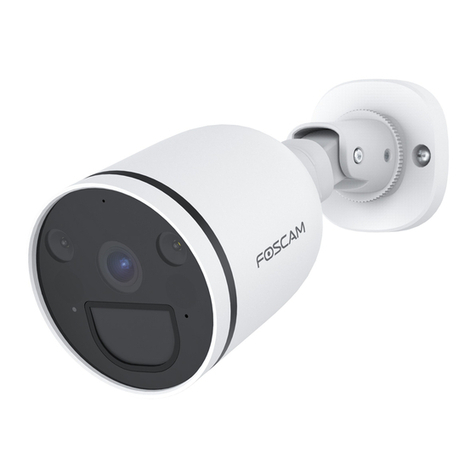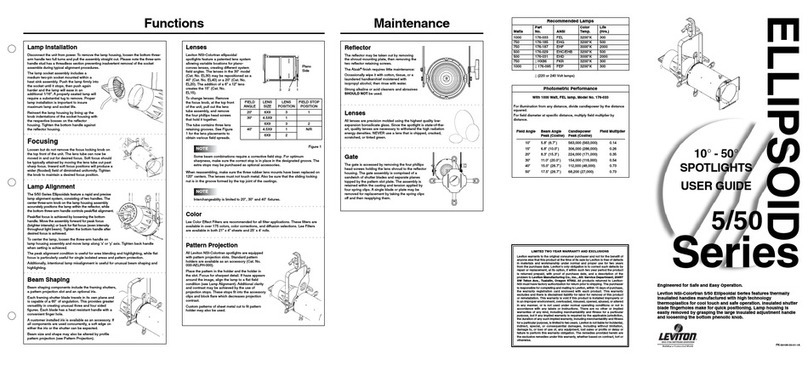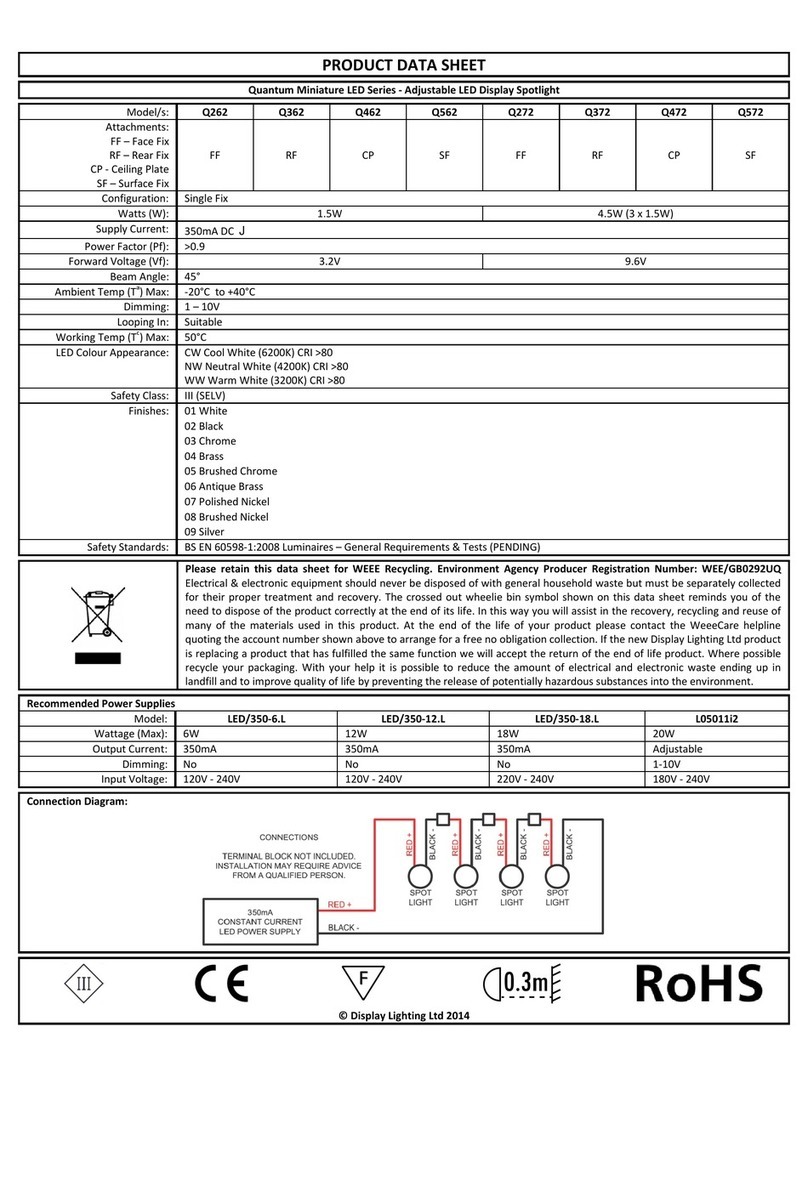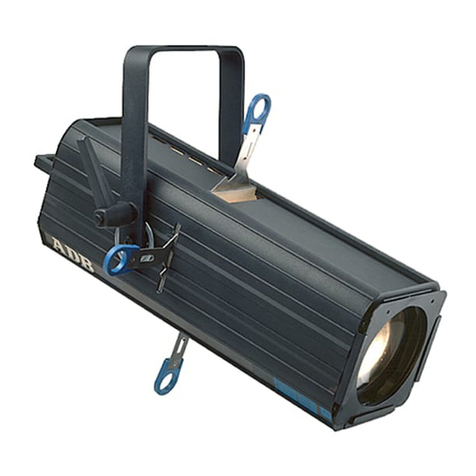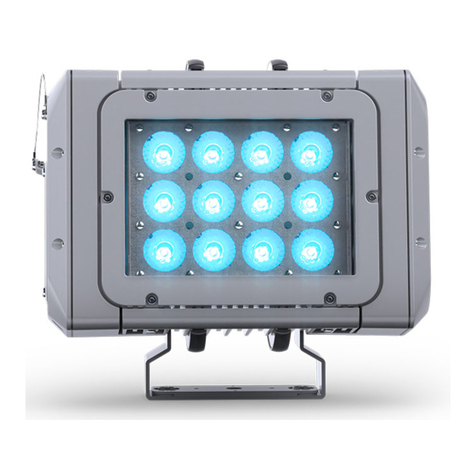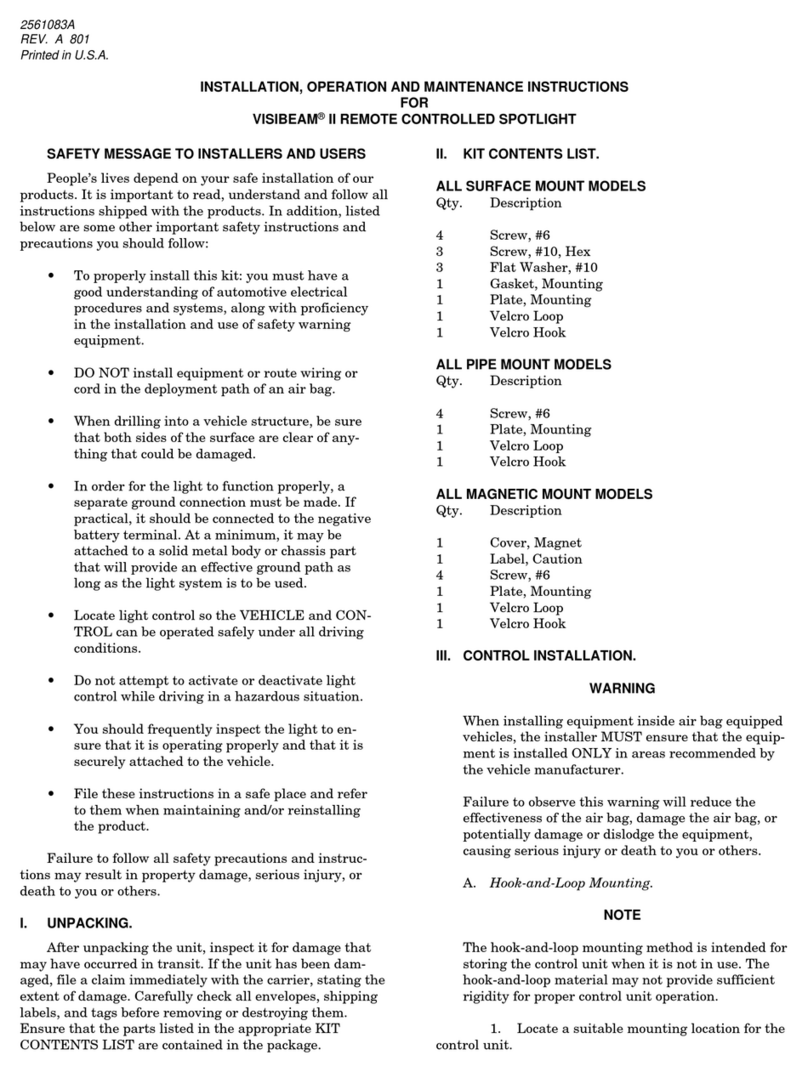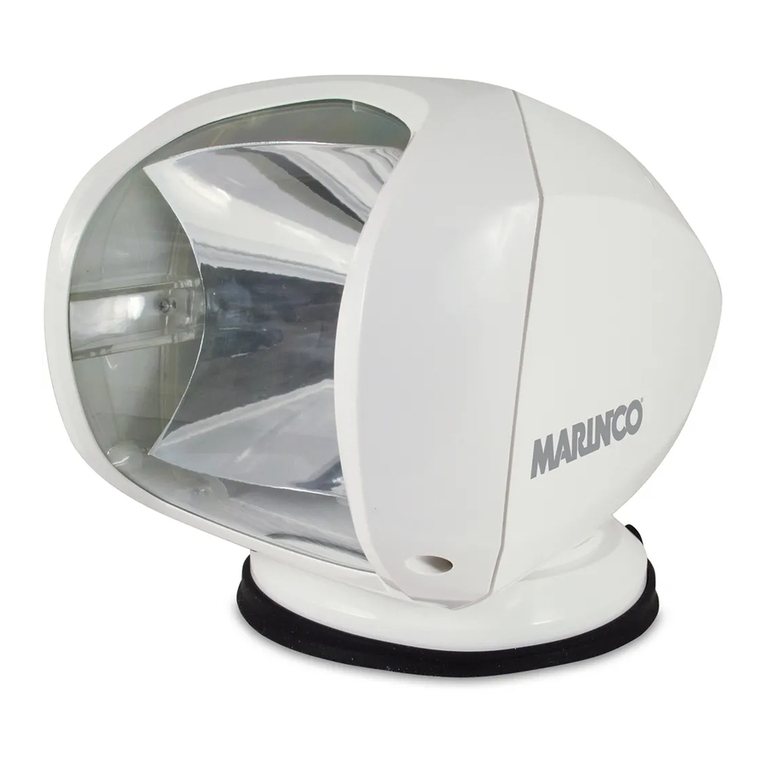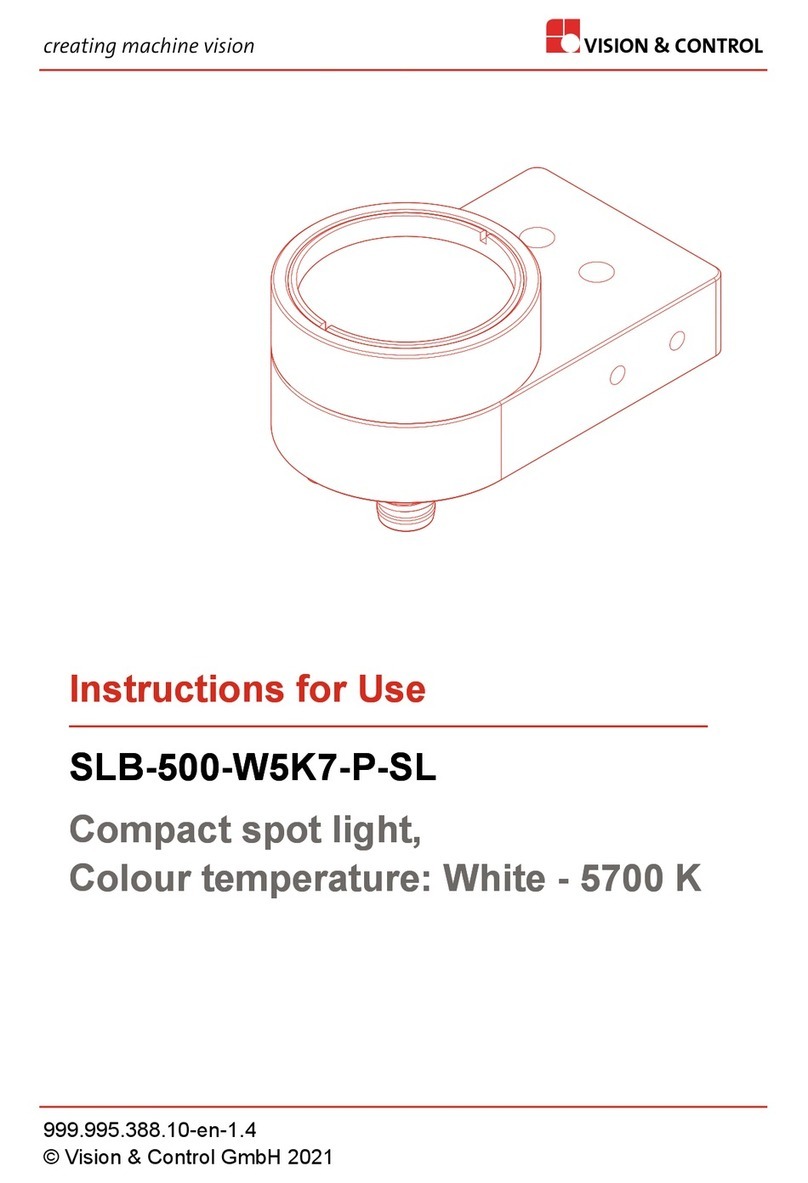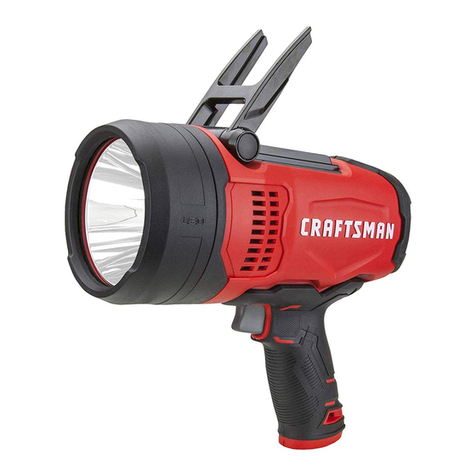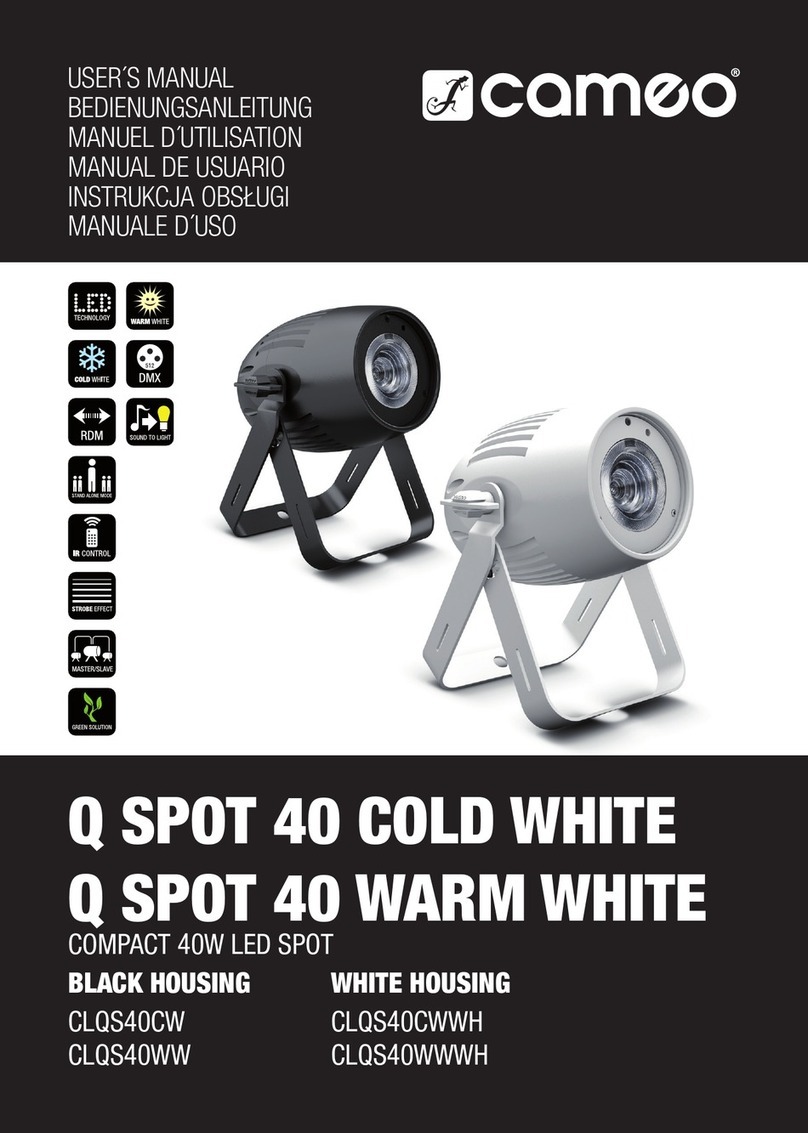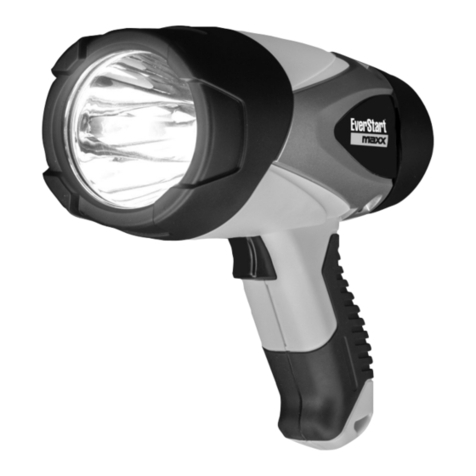
El reflector Precision Instrucciones
10
8. Conecte los cables al reflector con conectores a tope. El cable rojo es positivo y el negro
es negativo.
!ADVERTENCIA ¡LA POLARIDAD DE LOS CABLES DEBE SER LA CORRECTA
PARA QUE EL REFLECTOR FUNCIONE! ¡SI LOS CABLES NO SE CONECTAN
CORRECTAMENTE EL SISTEMA DE REFLECTOR SE DAÑARÁ!
9. Deslice el reflector por sobre el soporte de montaje, asegurándose de que los cables
no estén comprimidos y de que las dos lengüetas sujetadoras acoplen la luz en el
lugar correcto. Alinee el orificio del tornillo de fijación de la parte posterior de la base
del reflector con el orificio del tornillo de fijación del soporte de montaje. Esto requerirá
un grado de presión y esfuerzo, ya que el sello de montaje debe ser comprimido
adecuadamente durante este proceso. Para una alineación más fácil, levante ligeramente
la parte posterior del reflector (que contiene el orificio del tornillo de fijación) mientras
presiona la empaquetadura de la parte delantera del reflector (en la posición opuesta a
la del orificio del tornillo de fijación). Inserte el tornillo de fijación y asegúrese de que esté
completamente acoplado y fijo.
!ADVERTENCIA DEBE SENTIR QUE EL TORNILLO
ALCANZA UN PAR TORSOR CUANDO ESTÁ
CORRECTAMENTE ACOPLADO.
Nota: En la fotografía se muestran los cables púrpura
y amarillo del control remoto para el control remoto
conectado por cableado. Si se usa un control remoto
puente inalámbrico, entonces los conductores púrpura
y amarillo no son necesarios y se pueden guardar
dentro de la base del reflector.
Montaje del control remoto puente conectado por cableado e inalámbrico
1. Todos los controles remotos tienen protección IP54, lo que los hace resistentes a la
intemperie.
2. Escoja una ubicación de montaje basada en la empaquetadura suministrada con el
control remoto (el orificio grande debe estar hacia la parte superior)
3. Perfore orificios del tamaño correcto para los tornillos de montaje. El tamaño de los
orificios en los controles remotos es para tornillos de cabeza troncocónica n.° 6. La
longitud y el tipo de rosca deberán determinarse según la aplicación. Retire y deje a un
lado las 2 cubiertas de los tornillos.
4. Perfore un orificio para el cableado. Tenga en cuenta que el orificio debe ser de 1,6 cm
para que la unidad pueda permanecer nivelada.
5. Si va a montar el control remoto puente inalámbrico, necesitará una fuente de
energía de 12 V o 24 V.
Si va a montar el control remoto puente conectado por cableado permanente, no
necesitará una fuente de energía local, y en su lugar, puede usar los cables púrpura
y amarillo que van desde el reflector hacia el control remoto. Estos dos cables le
proporcionarán energía al control remoto y controlarán el reflector. Los terminales del
control remoto admiten un cable de 16 AWG hasta 26 AWG. La torsión máxima de los
terminales es de 0,25 Nm.
6. Pase los cables a través del orificio perforado en la superficie y la empaquetadura desde
abajo.
7. Para el control remoto puente inalámbrico, conecte los cables de la fuente de energía
a los terminales positivo (+) y negativo (-) del control remoto. Para el control remoto
puente conectado por cableado permanente, conecte los 2 cables del reflector. El
